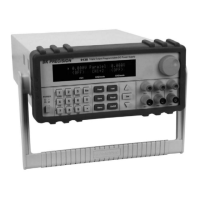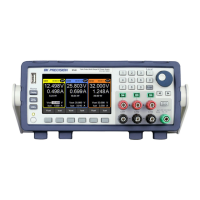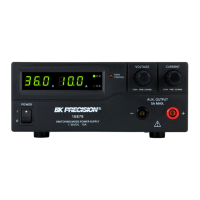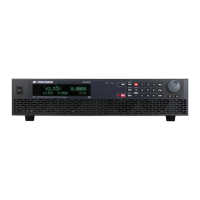rated output greater than 40V. To protect personnel
against accidental contact with hazardous voltages,
ensure that the load and its connections have no
accessible live parts. Ensure that the load wiring
insulation rating is greater than to the maximum
output voltage of the power supply.
2.4 Preliminary Check
Complete the following steps to verify that the power supply is ready for use.
1. Verify AC Input Voltage
Verify and check to make sure proper AC voltages are available to power the instrument.
The AC voltage range must meet the acceptable specification as explained in “2.1 Input
Power and Fuse Requirements”.
2. Connect Power and Self-Test
Connect AC power cord to the AC receptacle in the rear panel and press the power
switch to the |(ON) position to turn ON the instrument. It will run through a self-test
procedure.
Self-test Errors
The following errors will be displayed if self-test did not complete successfully:
The internal EEPROM is corrupted or damaged.
Last system settings within the EEPROM is lost.
Calibration data within the EEPROM is lost.
Factory calibration data is lost.
If any of these errors occur, please contact B&K Precision.
Output Check
Voltage Check
Follow the steps below to check basic voltage output with no load connected.
1. Turn on the power supply. The display will show the OFF annunciator above the voltage
display.
www.calcert.com sales@calcert.com1.888.610.7664
0
5
10
15
20
25
30

